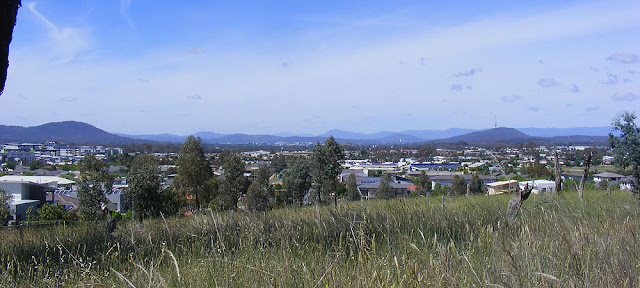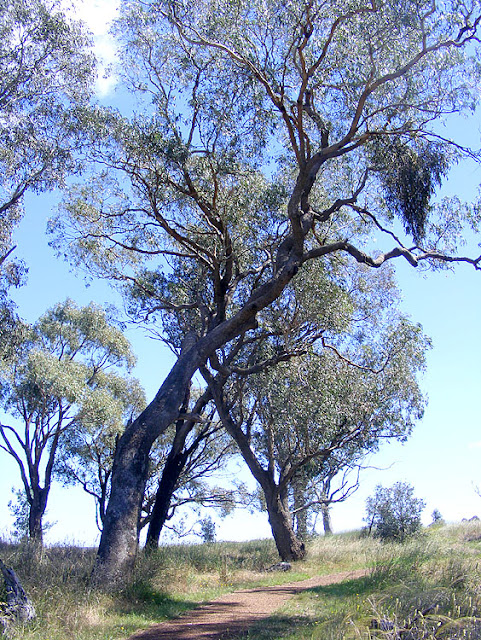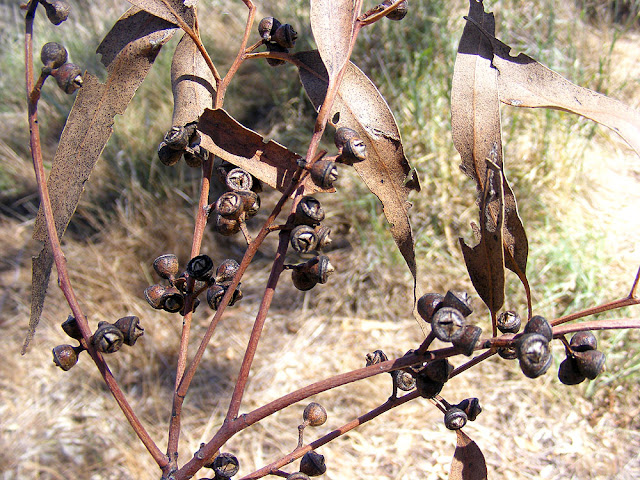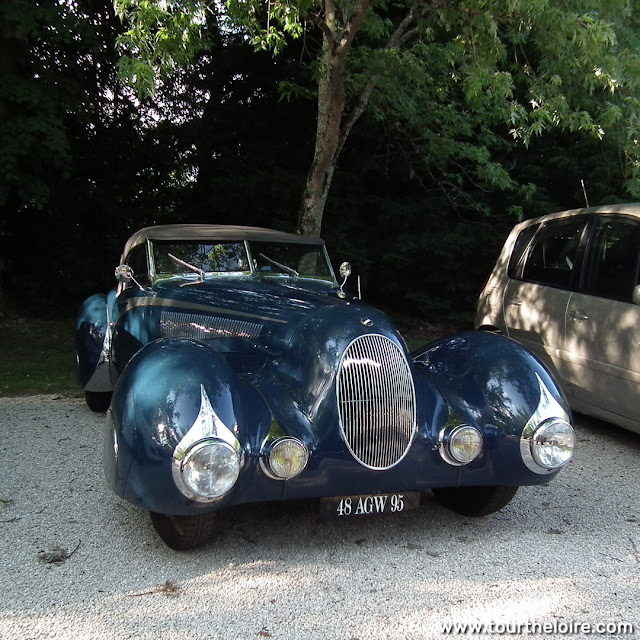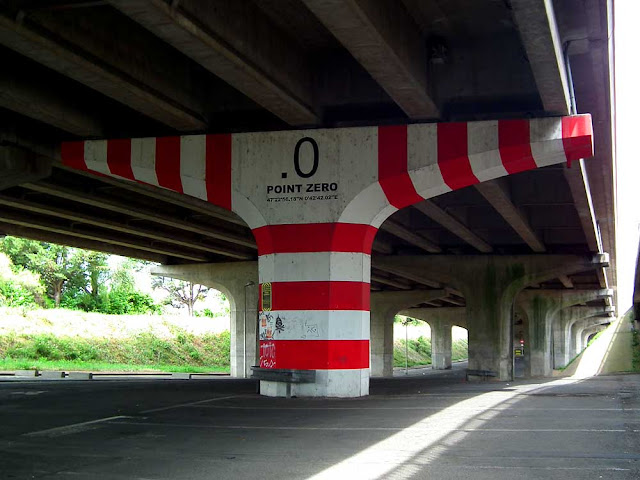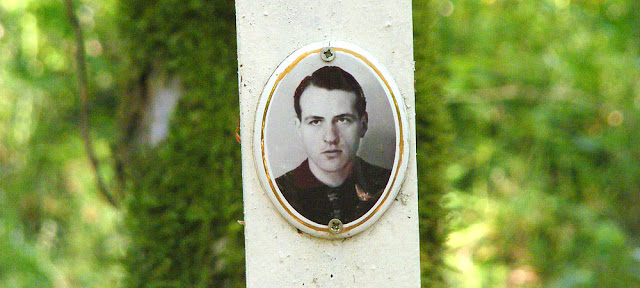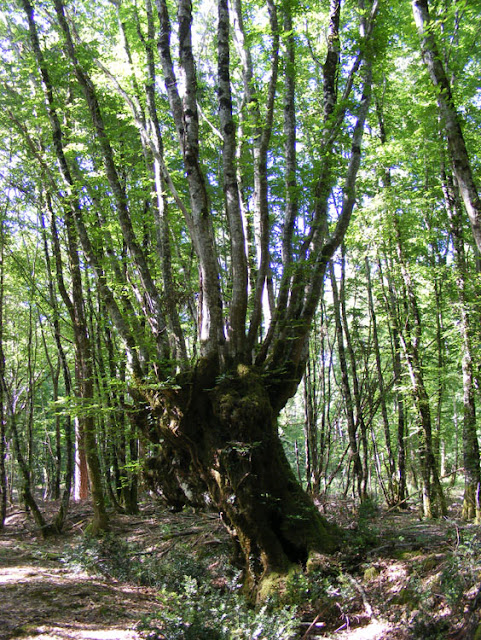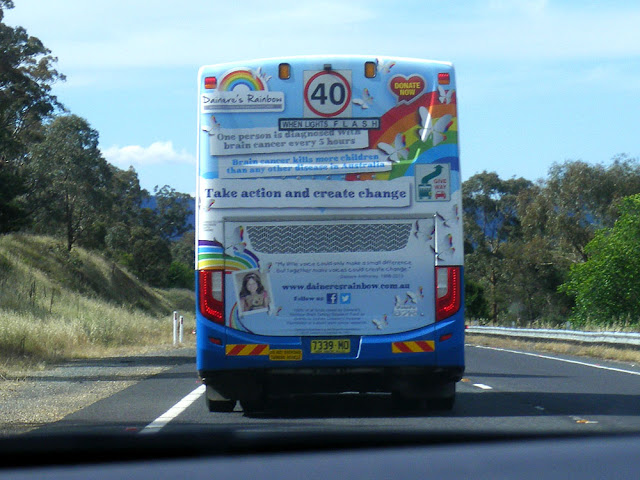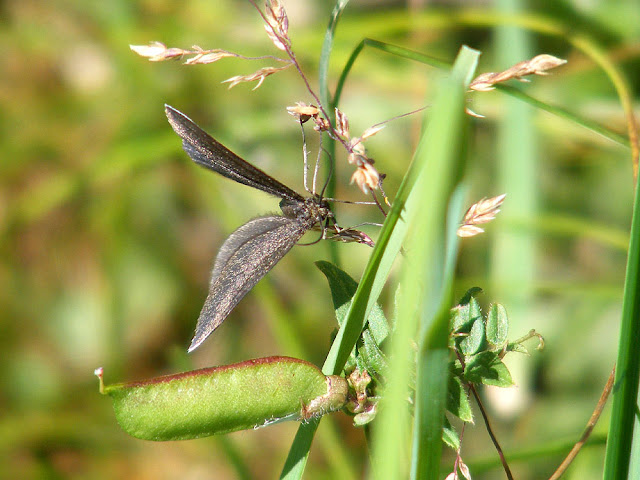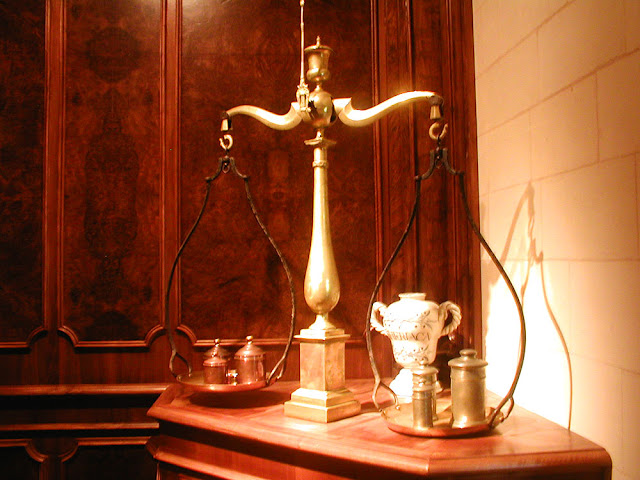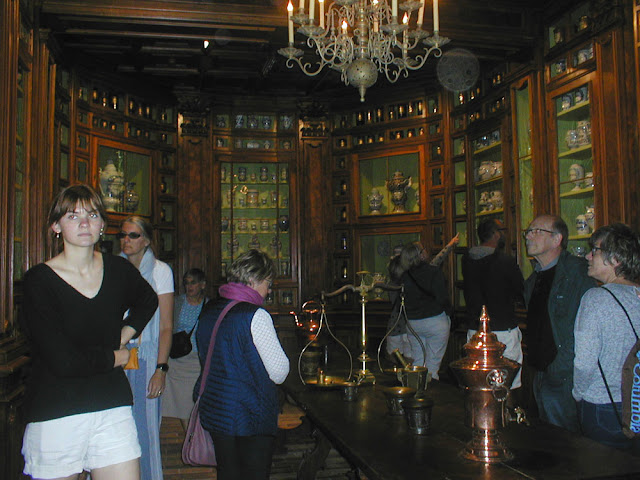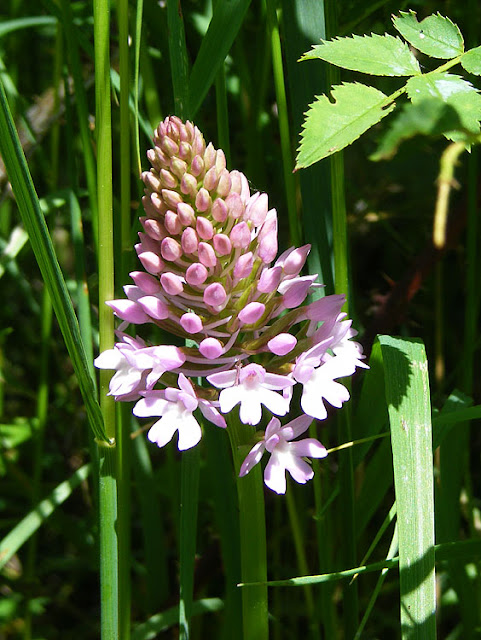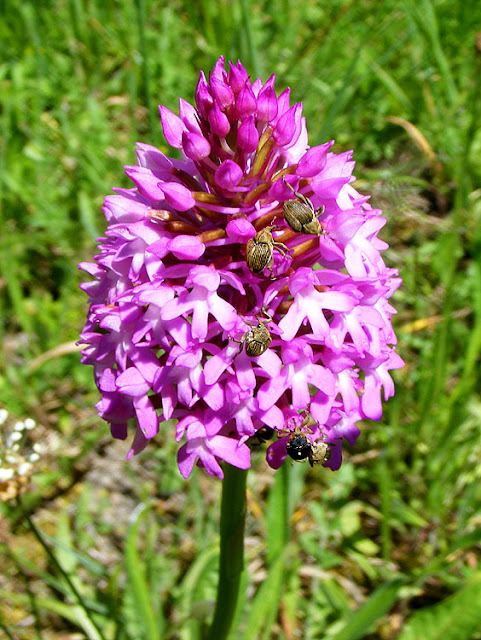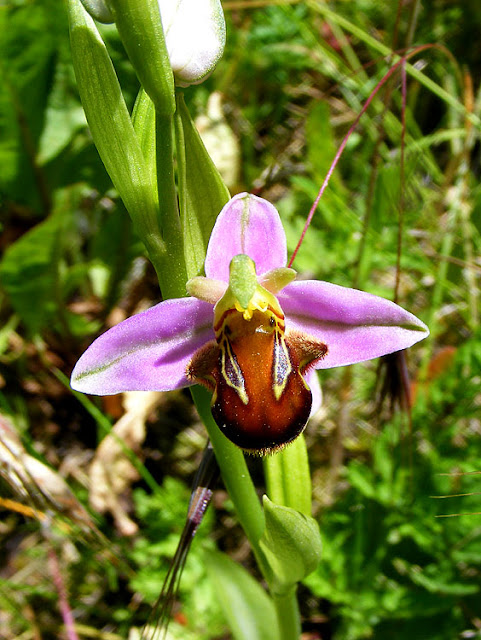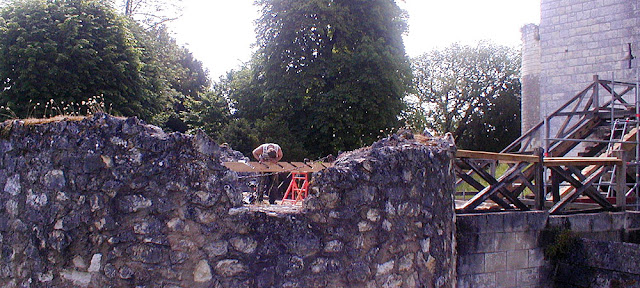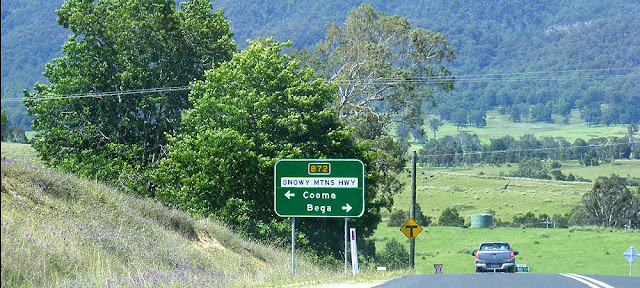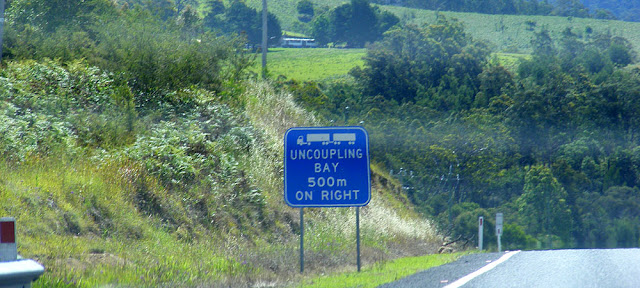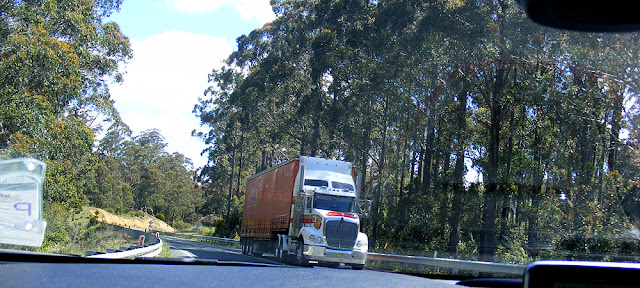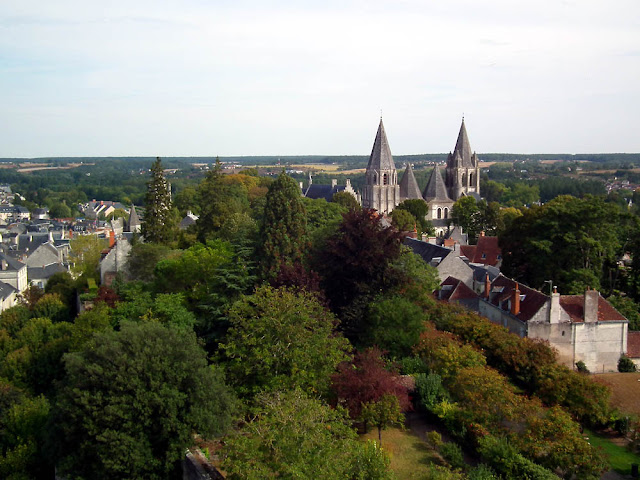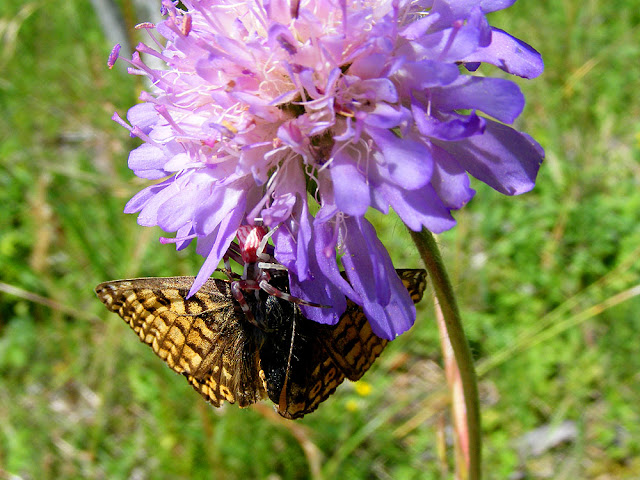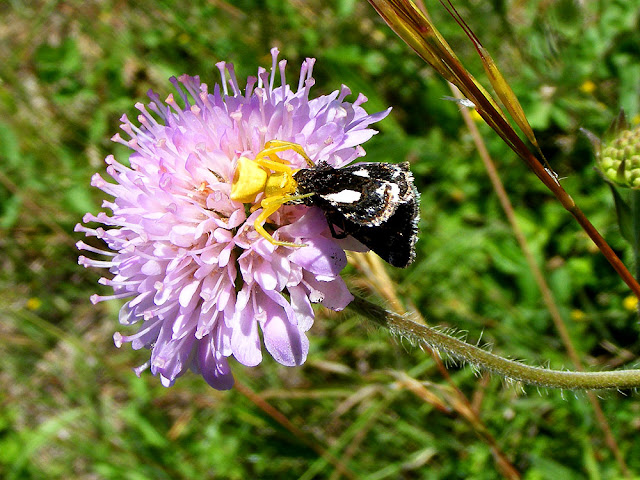Gubur Dhaura is a small suburban nature reserve in Canberra. The name means 'red ochre ground' in the Ngunnawhal Ngarigu language and its first English name was Red Hill. The hill sits on the watershed between two creeks and is 642 metres
above sea level, 31 metres above the valley floor below, offering
panoramic views of suburban Canberra and the surrounding mountains.
A view of suburban Canberra and the surrounding mountains from the nature reserve hill.
Aboriginal people camped here, made tools and collected ochres for at least 5000 years. European settlers grazed animals here in the early 19th century. From the late 19th century to the mid-20th century the site was mined for iron, gold and kaolin.
Apple Box Eucalyptus bridgesiana (with some mistletoe).
Aboriginal people used the red and yellow ochres from here for ceremonial purposes. The Europeans wanted the white clay and the iron ore for their industrial activities.
Apple Box gum nuts (seed pods).
The site was open forest, dominated by Apple Box Eucalyptus bridgesiana (a species that likes well drained clay soils) until the European graziers arrived. Grazing, ploughing, clearing, pasture 'improvement', quarrying, mining and dumping have all had a tremendous impact on the site. The introduction of rabbits didn't do the site any favours either. Nowadays there is abandoned mining and agricultural equipment strewn about the place, much of it heritage listed and discreetly secured to modern signage and pedestrian way markers to prevent theft.
The boulders on the hill are home to a colony of Cunningham's Skink Egernia cunninghami.
The handsome robber fly Apothechyla sp finds plenty of prey on the dry vegetation.
************************************************
For details of our private guided tours of chateaux, gardens, wineries, markets and more please visit the Loire Valley Time Travel website. We would be delighted to design a tour for you.
We are also on Instagram, so check us out to see a regularly updated selection of our very best photos.
We are also on Instagram, so check us out to see a regularly updated selection of our very best photos.


